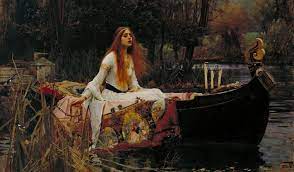 During the early twentieth century, European painting underwent a period of disruption. During this time, political, religious and cultural changes swept through Europe, and new ideas spread rapidly. New breakthroughs in transportation fuelled communication across borders. Painting and sculpture were fundamentally transformed by these changes. As a result, the old masters style of painting transitioned to the modernist period. You may want to check out Euro Painting, Inc. – Painters Sarasota FL for more.
During the early twentieth century, European painting underwent a period of disruption. During this time, political, religious and cultural changes swept through Europe, and new ideas spread rapidly. New breakthroughs in transportation fuelled communication across borders. Painting and sculpture were fundamentally transformed by these changes. As a result, the old masters style of painting transitioned to the modernist period. You may want to check out Euro Painting, Inc. – Painters Sarasota FL for more.
The twentieth century saw a number of new artists come to prominence. One of these artists was Jack Butler Yeats, who is credited with re-defining visual art in Ireland during the twentieth century. The Liffey Swin, a painting by Yeats, won a silver medal at the 1924 Summer Olympics. Another was Sigmar Polke, who uses abstract brushstrokes to illustrate postmodern painting.
Another important figure is Belgian Pictor Doctus Luc Tuymans, who is rooted in the Northern European Painting tradition. He is deeply connected to World War II and his childhood. He is also known for his work with “archive” art and simulacra. He is considered a true predecessor to New European Painting.
During the late twentieth century, European painting underwent a new phase of development. This phase is characterized by the influence of postmodern archive fever. This movement is considered to be a defining moment for New European Painting. It also marks a new beginning in a dialogue between European and American Abstraction. It relates to a new way of thinking about the relationship between figuration and abstraction. It also reflects the influence of new media.
Until the mid-19th century, European painting was primarily concerned with abstract forms. However, the early twentieth century saw a shift in focus from abstract to representational forms of painting. In addition, European painters became interested in the impact of new media on their images. They began to produce works in their own right, rather than working for a client. In the 1980s, artists began to pay attention to “archive” art, a new phenomenon in European painting. The proliferation of the Internet as well as the use of television functioned as catalysts for collecting a culture of images.
The Europeans have always been interested in how new technologies affect the way that we perceive and experience images. In the 1980s, European painters began to study the influence of the World Wide Web on their art. They have also been interested in how new media has influenced image theory.
In the 1990s, New European Painting reached a critical point of influence. It is characterized by a historical connection to European naturalistic painting and an engagement with postmodern archive fever. It also marks the beginning of a new dialogue between European history and American Abstraction.
The major new European painters have shown a strong engagement with the pains of personal and general history. The first generation of European Expressionists has been particularly concerned with European Post-War trauma. In addition, the second generation has been strongly influenced by the evolution of digital technology and the rise of new media. The major new European painters are often found using photography or other media to express their artistic vision.